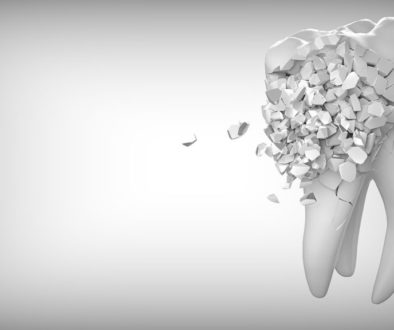How Does Your Dentist Detect Cavities?
 For most people who go to the dentist, they have to take it on faith that when their dentist tells them they have a cavity that they do actually have a cavity. Ever wondered how exactly your dentist knows when you have a cavity? Let’s take a look at all the ways this can happen…
For most people who go to the dentist, they have to take it on faith that when their dentist tells them they have a cavity that they do actually have a cavity. Ever wondered how exactly your dentist knows when you have a cavity? Let’s take a look at all the ways this can happen…
Visual Inspection
For surfaces your dentist can see, they look for changes in the enamel surface of the tooth. Early cavities can change the enamel to a white color while later on it can take on a brown, black, or gray appearance. Visual inspection alone can be challenging because several other things can appear similar to cavities such as developmental problems with teeth or staining. They’ll also look for any staining or breakdown around the edges of any existing fillings or crowns you have. These can sometimes be an indication that decay is starting or will be starting soon in those areas.
By Feel
Cavities start to break down the surface of the tooth, leading to a soft or sticky feel with an instrument known as an explorer. Most dentists have started to move away from using these instruments aggressively as they damage enamel surfaces as well as push bacteria deeper into grooves of teeth. A light touch with these instruments is ok. Again, this method only works on surfaces your dentist can get to. Surfaces in between the teeth (which are some of the most common areas for adults to develop decay) can only be checked with x-rays or certain electronic cavity detection systems.
X-Rays
For a cavity to show up on a x-ray, nearly 50% of the tooth structure has to be already missing. Cavities in the mouth are always bigger than they appear on x-rays. X-rays are most helpful for cavities in between teeth (the surfaces your dentist can’t see). Cavities on the front or back side of a tooth as well as on the biting surfaces usually don’t show up until they are quite large.
The challenge with all the previous methods is that they are very subjective. Different dentists see and feel different things, even on the same patient. Many studies have been done about how accurate these types of cavity detection are and the results are disheartening for dentists. Generally dentists are pretty accurate in that if they say there is a cavity there, they are usually right. The real problem is not diagnosing some cavities that are there. Sometimes none of the methods are able to detect the decay until it is quite a bit larger than we’d like. Because of this, several companies have developed electronic devices to help with the process (with varying success).
Cavity Detection Devices
Fluorescence based cavity detection devices such as Diagnodent – These devices detect the fluorescence of certain proteins in bacteria associated with cavities. Some of the machines will beep faster and others show higher numbers when they detect this protein. The big challenge with these types of systems is that they tend to have a lot of false positives (saying there is a cavity when there actually isn’t). If there is polishing paste left on the tooth, even this can trigger it. I personally don’t like these types of systems for that reason. I also think they’ve been misused by many dentists (more on that later).
Transillumination based systems – In these systems, a special wand shines a very bright light on both sides of the tooth and a camera takes a picture of the tooth. Any less dense areas of the tooth (say where a cavity is) will show up as a dark area on the picture. I’ve found this type of system to be a very helpful piece of information in the puzzle about cavities but it definitely can’t replace the other methods.
Laser based systems – These systems are probably the most advanced of all of them. The most well known is the Canary System. They use a special laser that detects breakdown in the structure of of the crystals of the tooth. Research indicates that this is the most accurate of all the detection methods and can detect a cavity at the very early stages.
The Verdict on Electronic Cavity Detection Systems
One thing that is both good and bad about these systems is that they can pick up decay at a very early stage, when it has just started to barely break down the enamel and hasn’t spread into the dentin. Many dentists will see these very early cavities and go ahead and put a filling in when maybe they should just watch the area and try to remineralize it. Remember that cavities can be remineralized (fixed!) when they are only in the enamel layer of the tooth. This requires diet change and aggressive use of fluoride but it can and is done.
I’m ok with dentists using these systems as long as they are not the only tool that is used to determine whether the cavity needs to be taken care of or not. Ideally, they’ll use information from all the different methods and their brain (the best tool) to decide whether or not a filling at this time is the best course of action.
Questions To Ask Your Dentist
If in doubt about whether or not you need treatment for your cavities, ask your dentist to show you specifically where the cavities are. An honest dentist will be happy to do so. Most dentists nowadays have small cameras that can quickly take pictures of your teeth. If the cavities are on a visual spot, they can easily take a picture and show it to you. If the cavities are in between the teeth, they can show you on your x-rays. These may look relatively minimal and hard to see, but if you can see even a small shadow where they are pointing, it likely needs to be taken care of. Lastly, if they are using a digital detection system, ask about how big the system is estimating the cavity to be. If it is very minimal, ask whether remineralization is still an option (only before it has spread into the dentin of the tooth). If, they dodge the questions or you don’t feel comfortable, get a second opinion! Again, an honest dentist should have no problems with this. The treatment plan from the second dentist may be slightly different (there are always differences of opinion on when exactly to treat, even among honest dentists) but should be relatively close to what your other dentist recommended.



